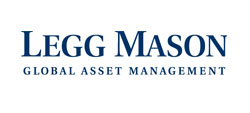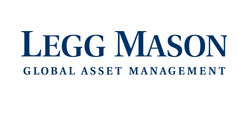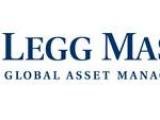LEGG MASON AFFILIATES BELIEVE 2015 SHOULD PROVIDE AMPLE OPPORTUNITIES IN US AND GLOBAL MARKETS – BUT THE DETAILS WILL MATTER
As Western Asset’s team forecasts, “A stronger U.S. dollar, lower oil prices and muted wage growth should continue to put downward pressure on inflation. The prospect of muted inflation, with the risks tilted towards inflation moving even further below the Fed’s target, should continue to keep bond yields low, thereby supporting bond prices.”
While generally positive in their outlook, the Permal team draws a more cautionary conclusion about conventional credit strategies, noting that opportunities will be very specific: “We are right at the cusp of a major change. That’s not to say credit will become catastrophic, but it is likely to be much harder to generate real returns going forward.”
Legg Mason’s “What to Watch for in 2015: Themes and trends that could shape the markets,” can be accessed via this link: [insert here]
“The strength of our affiliate model can be seen in the diversity of opinions across our investment managers. Collectively, that provides us a global perspective that translates into a broad spectrum of investment solutions to offer our clients. It’s a differentiated point of view that we believe is valuable,” said Joseph A. Sullivan, Chairman and CEO of Legg Mason.
What to Watch for in 2015 provides market climate and investment insights from the company’s seven affiliates: Western Asset, Brandywine Global, ClearBridge Investments, Royce Funds, Permal, Martin Currie and QS Investors. Excerpts include:
- The U.S. economy should continue accelerating on the back of strong private-sector expansion, allowing growth to gradually replace liquidity as the economy’s paramount support (Brandywine Global).
- U.S. corporations have a record $10 trillion in cash on their balance sheets. How they allocate that cash and other capital assets should impact earnings, stock prices and value creation (ClearBridge Investments).
- At least one major economy, the U.S., is moving toward normality and has emerged as the driver of global growth. But we are also in an environment where geopolitical unease is rising (Permal).
- The global economy should continue to expand, aided by accommodative central banks and improving private demand. Many central banks should continue to ease monetary policy, including the European Central Bank (ECB) and the Bank of Japan. This should provide an impetus to growth, while also supporting financial markets (Western Asset).
- Growth in Continental Europe remains, at best, anemic. The benefit of a more open-handed ECB, the heavily promoted €300 billion infrastructure fund and the declining euro could add up to a solid year for select European companies (Martin Currie).
- Japan and Europe, both beset by structural headwinds, may require further currency depreciation, labor reform and positive external surprises before liquidity support can safely be removed. A cheaper euro will be an integral part of success. (Brandywine Global).
- Europe has its back against the wall, and will have to choose whether to be a hero or a zero. Should economic growth continue to be anemic and inflation expectations continue to fall, the Eurozone may have to choose between a deflationary spiral similar to what Japan went through in the 1990s or a more aggressive, full blown quantitative easing program, with direct purchases of government bonds (QS Investors).
- China should manage a soft-landing (Western Asset).
- Japanese companies are experiencing the best earnings and dividend growth in the developed world. This fundamental improvement has yet to be discounted in share prices, with valuations remaining among the lowest in the world. Low expectations for improvements in profitability and growth set the scene for continued upside surprises (ClearBridge Investments).
- But, there are macro factors to consider. If Abenomics doesn’t work, the huge sucking sound coming from Japan could challenge economic growth in all of Asia. Japan’s central bank understands the stakes. By acting aggressively, the Bank of Japan demonstrated to both investors and policy makers its commitment to reigniting inflation in the Japanese economy. A declining yen would allow Japan to be a more competitive exporter, and should boost inflation as well (QS Investors).
- Recent policy changes in certain emerging market (EM) economies, including Mexico, should lead to increased efficiency and output (Western Asset).
- EM equity markets appear to be diverging: countries which need rapid Chinese growth to continue because they are driven by exports of natural resources to China, including Chile, Peru, and Brazil; and those far less dependent on China, namely Mexico, Korea, Indonesia, Malaysia and Philippines. These regions bifurcate with Mexico benefiting from the U.S. economy, while the likes of Brazil are in a far tougher spot (Permal).
The affiliates also offer strategic suggestions for investors across fixed income, equities and alternative markets:
- Long-dated U.S. Treasury bonds should provide the best diversification for risk positions (Western Asset).
- Broadening global growth should be favorable for many sectors, including corporates, mortgages, and emerging markets, which should benefit from the additional yield relative to Treasuries, as well as from improvements in the credit quality of underlying entities (Western Asset).
- Local EM debt should provide the most attractive value. EM currencies and bond yields now offer elevated risk premia because investors are fearful of slowing global growth and a potential repeat of past crises (Brandywine Global).
- Expect a continuation of M&A activity across most sectors of the economy. Low interest rates have enabled financing of acquisitions at attractive terms, and the threat of higher rates in the years ahead may speed up deal-making (ClearBridge Investments).
- Healthy balance sheets and still-low payout ratios should also lead to solid dividend growth, extending the “Golden Age of Dividends” (ClearBridge Investments).
- The recent small-cap correction has been rotational — it has been going on, quietly, for a long time. Examination of the index suggested that the rotation left many high-quality small-cap stocks still undervalued (Royce Funds).
- Divergence of economic conditions creates many interesting trading opportunities, in currencies, fixed income, country vs. country from an equity standpoint, or even a particular country’s equity market between winning and losing sectors (Permal).
- Opportunities in credit are likely to be very specific. With higher U.S. interest rates come a higher number of defaults – and struggling companies will find it difficult to sustain themselves (Permal).
About Legg Mason
Legg Mason is a global asset management firm, with $707 billion in AUM as of November 30, 2014. The Company provides active asset management in many major investment centers throughout the world. Legg Mason is headquartered in Baltimore, Maryland, and its common stock is listed on the New York Stock Exchange (symbol: LM).
All investments involve risk, including loss of principal. Past performance is no guarantee of future results.
Equity securities are subject to price fluctuation and possible loss of principal. Small- and mid-cap stocks involve greater risks and volatility than large-cap stocks. International investments are subject to special risks including currency fluctuations and social, economic and political uncertainties, which could increase volatility. These risks are magnified in emerging markets.
Fixed-income securities involve interest-rate, credit, inflation and reinvestment risks, and possible loss of principal. As interest rates rise, the value of fixed-income securities falls.
Income and yields will fluctuate and are not guaranteed.
This material is for information only and does not constitute an invitation to the public to invest in any funds, securities, strategies or other products. You should be aware that the investment opportunities described should normally be regarded as longer term investments and they may not be suitable for everyone.
Forward-looking statements are subject to uncertainties that could cause actual developments and results to differ materially from the expectations expressed. Information and opinions expressed by either Legg Mason or its affiliates are current as at the date indicated, are subject to change without notice, and do not take into account the particular investment objectives, financial situation or needs of individual investors.
The opinions and views expressed herein are not intended to be relied upon as a prediction or forecast of actual future events or performance, or a guarantee of future results, or investment advice.
INVESTMENT PRODUCTS: NOT FDIC INSURED | NO BANK GUARANTEE | MAY LOSE VALUE
Legg Mason Investor Services, LLC and all affiliates mentioned above are subsidiaries of Legg Mason, Inc.
Copyright © 2014 Legg Mason Investor Services, LLC. Member FINRA, SIPC


